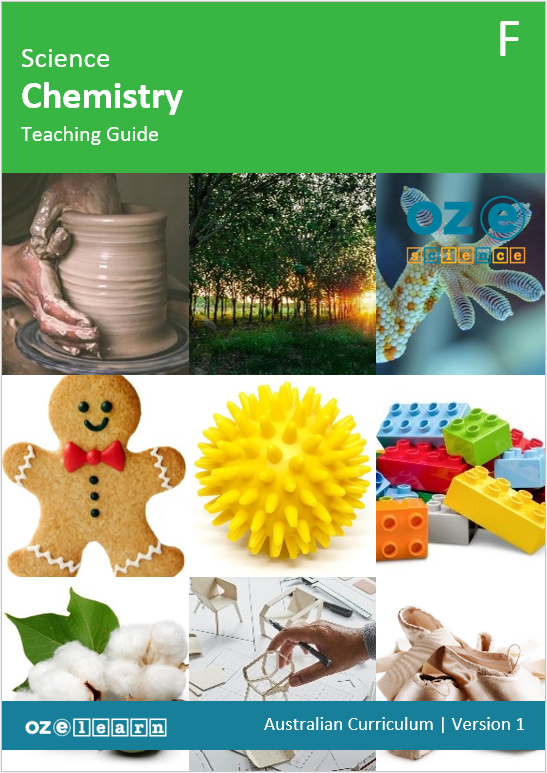Oz-e-science

Teaching resources
Extra resources
In Lessons 1 to 9, students learn about:
- materials and the things we make from them
- describing the material a thing is made from
- categorising things made from natural materials
- making something useful from a natural material
- how to identify and classify natural materials that have been changed into new materials by humans
- sorting things that are made from human-made materials
- the properties of materials
- how to describe the properties of materials at discovery stations
- everyday materials with absorbent properties
- experimentation with materials to see which ones have absorbent properties
- everyday materials that have waterproof properties
- experimenting with materials to see which ones have waterproof properties
- different materials used to make shoes for a purpose
- planning and designing an umbrella that protects a gingerbread man from the rain
- making a model, experimenting and recording results to see if the waterproof umbrella protects the gingerbread man from getting wet.
- Look at the materials that everyday things are made from.
- Describe the material a thing is made from.
- Sort things based on the natural material they are made from.
- Made a model of something useful from a natural material.
- Investigate different types of materials that are human-made and the natural materials they are made from.
- Sort things based on the human-made material they are made from.
- Describe the properties of materials using two senses (touch, sight).
- Describe the properties of materials at discovery stations.
- Look at everyday materials with absorbent properties.
- Experiment with materials to see which ones have absorbent properties.
- Look at the everyday materials that have waterproof properties.
- Experiment with materials to see which ones have waterproof properties.
- Look at everyday materials that are used to make different shoes for a purpose.
- Make a model of a shoe for a purpose.
- Plan a waterproof umbrella design that protects a gingerbread man from the rain.
- Make a model of waterproof umbrellas.
- Experiment to find out if the waterproof umbrellas protect the gingerbread man from the rain and record the results.
Progress Tests
Progress tests are conducted after every second lesson, allowing teachers to monitor student understanding of the concepts taught over the past two lessons and to identify where reteaching is needed. The Teaching Guide contains the testing questions, and the Student Workbook has a section where students write their answers and score themselves.
Structured Research Activity
The Structured Research Activity (SRA) for this unit is: Students design and make a waterproof umbrella, experiment on the umbrella and report results. The SRA takes place over two lessons so students can apply the Science Understanding and Science Inquiry Skills covered in the unit. Teachers use the Guide to Making Judgements, which is included in the Teaching Guide, to mark the SRA.
End-of-Unit Assessment
The last lesson is the end-of-unit assessment, which has a variety of question formats (e.g. label the diagram, circle the correct answer) to assess student mastery of content from the unit. The end-of-unit assessment is in the Teaching Guide. Teachers copy the assessment and distribute to students at testing time.
Progress tests are conducted after every second lesson, allowing teachers to monitor student understanding of the concepts taught over the past two lessons and to identify where reteaching is needed. The Teaching Guide contains the testing questions, and the Student Workbook has a section where students write their answers and score themselves.
Structured Research Activity
The Structured Research Activity (SRA) for this unit is: Students design and make a waterproof umbrella, experiment on the umbrella and report results. The SRA takes place over two lessons so students can apply the Science Understanding and Science Inquiry Skills covered in the unit. Teachers use the Guide to Making Judgements, which is included in the Teaching Guide, to mark the SRA.
End-of-Unit Assessment
The last lesson is the end-of-unit assessment, which has a variety of question formats (e.g. label the diagram, circle the correct answer) to assess student mastery of content from the unit. The end-of-unit assessment is in the Teaching Guide. Teachers copy the assessment and distribute to students at testing time.
Oz-e-science applies a teaching approach and curriculum that uses explicit teaching of content and knowledge of science as well as explicit teaching and practical scientific inquiry using the Scientific Method. Read more about pedagogy here.

